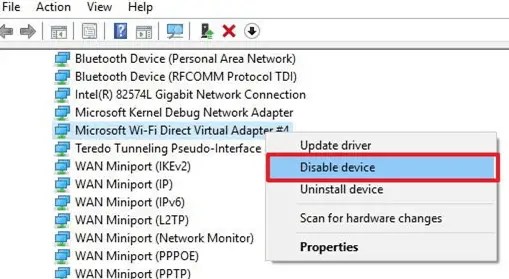
Load the C# version of the WiFi Direct UWP sample in Visual Studio 2017Ĭompile the sample and deploy/run it on the MBM:. Clone or download the WiFi Direct UWP sample(root of the GitHub repo is here). Install Visual Studio 2017 on your Windows 10 PC. The PC (or laptop) will need to have WiFi Direct support (e.g. A Windows 10 PC running the latest Windows 10 Anniversary Update. Connect monitor, keyboard, and mouse to the MBM. MinnowBoardMax (MBM) running Windows 10 IoT Core (see instructions here), with a CanaKit WiFi dongle. We will use the C# version and run the sample of two devices. You can easily test the WiFi Direct functionality with the WiFi Direct UWP sample. Supported AdaptersĪ list of WiFi adapters that have been tested on Windows 10 IoT Core can be found on our Supported Hardware page. Take a look at the UWP APIs available in the namespace to see what you can do with WiFiDirect. WiFi Direct provides a solution for WiFi device-to-device connectivity without the need for either a Wireless Access Point (wireless AP) to set up the connection.  the corresponding driver of the USB WiFi adapter needs to support WiFi Direct. the hardware of the USB WiFi adapter needs to support WiFi Direct,. To make sure that WiFi Direct is enabled, two things need to be true: IHV extensibility DLL path: C:\WINDOWS\System32\IWMSSvc.WiFi Direct is supported on Windows 10 IoT Core devices through the use of a WiFi Direct enabled USB WiFi adapter.
the corresponding driver of the USB WiFi adapter needs to support WiFi Direct. the hardware of the USB WiFi adapter needs to support WiFi Direct,. To make sure that WiFi Direct is enabled, two things need to be true: IHV extensibility DLL path: C:\WINDOWS\System32\IWMSSvc.WiFi Direct is supported on Windows 10 IoT Core devices through the use of a WiFi Direct enabled USB WiFi adapter. 
Radio types supported : 802.11b 802.11g 802.11n 802.11a 802.11acĨ02.11w Management Frame Protection supported : YesĪuthentication and cipher supported in infrastructure mode: The only difference I've seen so far is the on the machine where wireless display is not working the "Microsoft Wi-Fi Direct Virtual Adapter" is showing in device manager as "Not Connected (Code 45)".ĭriver : Intel(R) Dual Band Wireless-AC 7265 I've then updated the driver as above and it continuesĪs part of my troubleshooting, I've removed the Graphics and Network drivers with the delete driver option ticked, which hasn't resolved the issue.

I've grabbed a second Dell Latitude E7450 and performed a clean install of Windows 6, and straight away that show's that it does support Wireless Display, even with the default wireless driver. I've installed the latest version of the driver from Dell's web site, Network_Driver_PX32H_WN32_18.40.0.9_A19, and that hasn't changed anything. Wireless Adapter: Intel Dual Band Wireless-AC 7265 I have deployed a customised image of Windows 6 using Microsoft System Center Configuration Manager to a Dell Latitude E7450, and it is now showing that the "Wi-Fi Driver" does not support "Wireless Display".







 0 kommentar(er)
0 kommentar(er)
